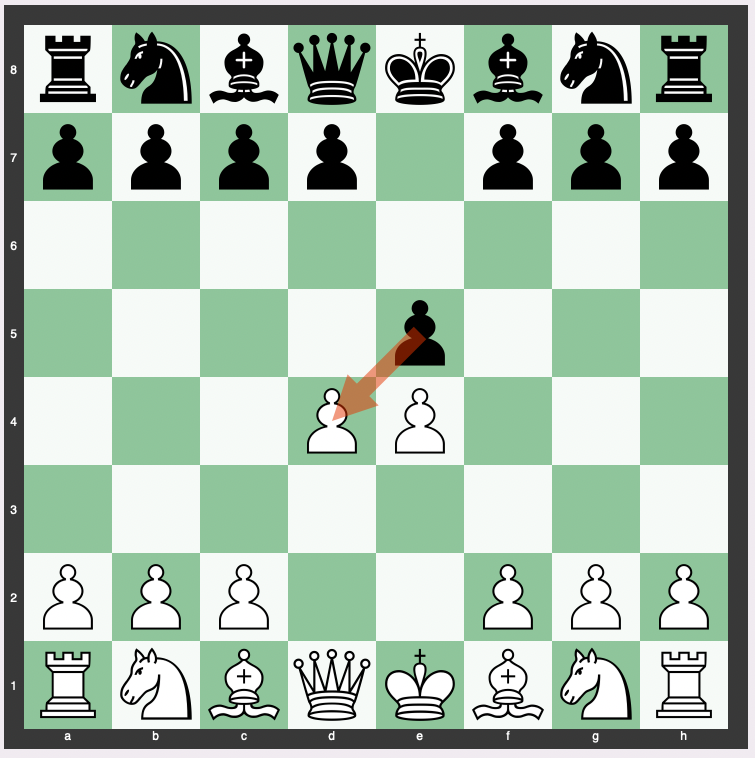What are the survival rates of various chess pieces in a game?
We’ll summarize the work of programmer Oliver Brennan who took a look at this question via his project here.
- Kings (e1 and e8)
- Have the highest survival rate in the game.
- Pawns
- Rooks
- Around 55% survival rate.
- Queens
- Around 49% survival rate.
- Knights
- Survival rate is around 26%.
- Bishops
- Survive about 35% of the time.
- Kingside bishops have a slightly higher survival rate than queenside bishops.
- Observation
- There seems to be a symmetry in the survival rates of the White and Black c- and e-pawns, indicating frequent exchanges on the d-file.
Charts
By starting position:

In chart form:

Which chess piece has the highest survival rate in a typical game?
Both kings (e1 and e8) have the highest survival rate in a typical game.
This is expected as the end of the game (checkmate or stalemate) revolves around the kings’ positions, and they’re never actually “captured.
How does the survival rate of pawns vary across different files (a-h)?
The survival rate among the pawns varies, with the h, g, f, a, and b-pawns having higher survival rates.
This could be attributed to their relative distance from the center of the board, where a lot of the action typically takes place.
The central pawns, particularly the White d-pawn, have a notably lower survival rate.
The White c-pawn survives 42% of the time, while White’s d-pawn has the lowest survival rate of 24%.
What percentage of rooks typically survive till the end of a game?
Rooks have a survival rate of around 55%.
This means that more than half the time, a rook will still be on the board by the game’s end.
How often do queens survive compared to other pieces?
Queens have a survival rate of around 49%. This is slightly lower than rooks but higher than many of the other pieces.
Given the power and versatility of the queen, it often becomes a primary target in games, leading to its relatively lower survival rate.
Why are survival rates of chess pieces so high?
Most games are played to one player’s resignation rather than checkmate.
Do central pawns have a lower survival rate than edge pawns?
Yes, central pawns generally have a lower survival rate than edge pawns.
The center of the board is a focal point for many strategies, leading to more conflicts and exchanges in that area.
Specifically, the White d-pawn is the most vulnerable, with a survival rate of only 24%.
Which has a better survival rate: knights or bishops?
Bishops have a slightly better survival rate compared to knights.
Bishops survive around 35% of the time, while knights have a survival rate of approximately 26%.
Is there a difference in survival rates between kingside and queenside bishops?
Yes, there is a difference. Kingside bishops have a slightly higher survival rate compared to queenside bishops.
This could be due to the initial positioning of these pieces or general gameplay strategies that expose queenside bishops to more danger.
How does promotion affect the survival rate of pawns?
In the context provided, promotion counts as survival.
This means that a pawn reaching the opposite end of the board and promoting to another piece, usually a queen, is considered as having “survived.”
This interpretation likely contributes to the relatively high survival rates of some pawns, especially those further from the center.
Are there any notable patterns or symmetries in pawn survival rates across the board?
There’s a noticeable symmetry in the survival rates of the White and Black c- and e-pawns.
This symmetry suggests that these pawns are frequently exchanged on the d-file, indicating a common pattern of pawn exchanges in the center.
How do the survival rates of pieces change in different styles of play (e.g., aggressive vs. defensive)?
The data provided doesn’t specify survival rates based on different styles of play.
However, in general, an aggressive style might lead to more exchanges and hence lower survival rates for many pieces.
Conversely, a defensive or conservative style might see higher survival rates as players are more cautious about exchanging pieces.
The actual rates would depend on specific game data categorized by playing style.


